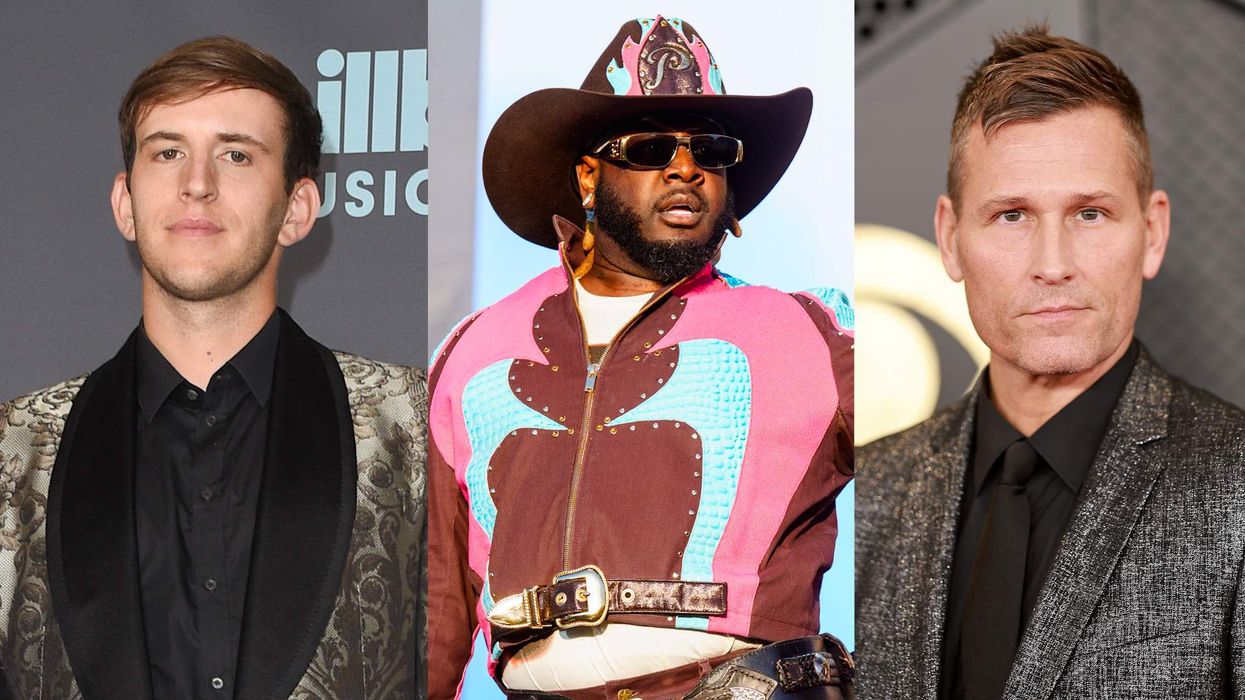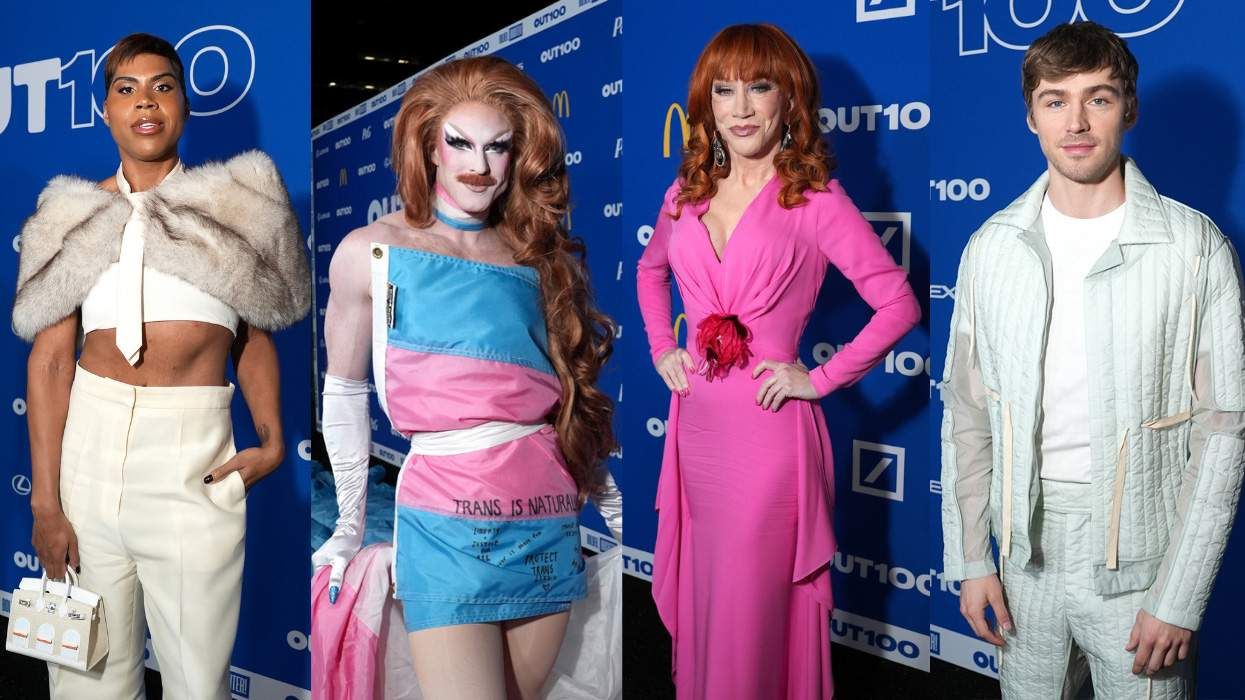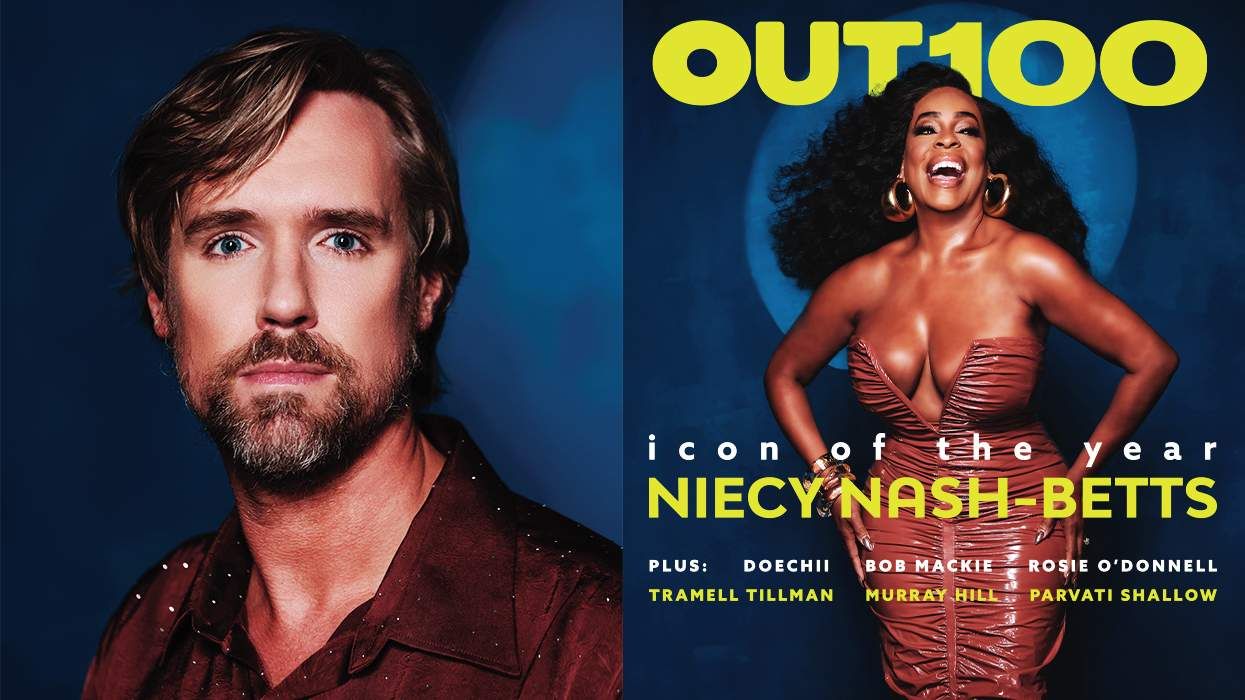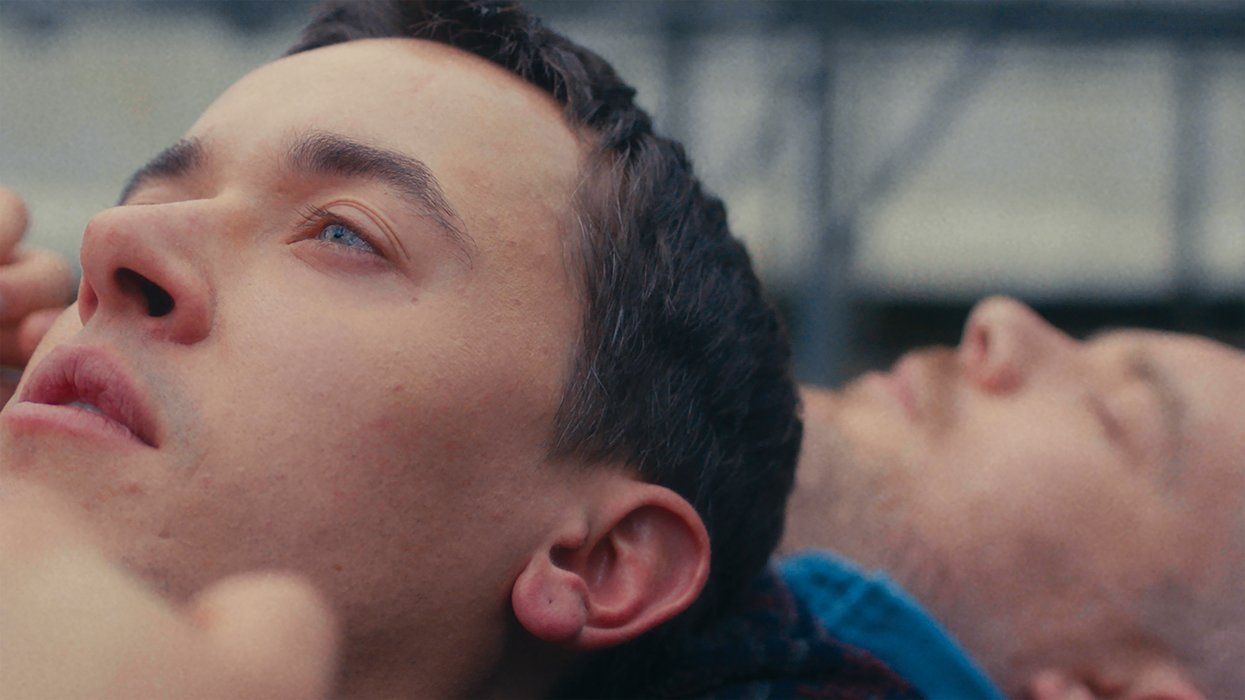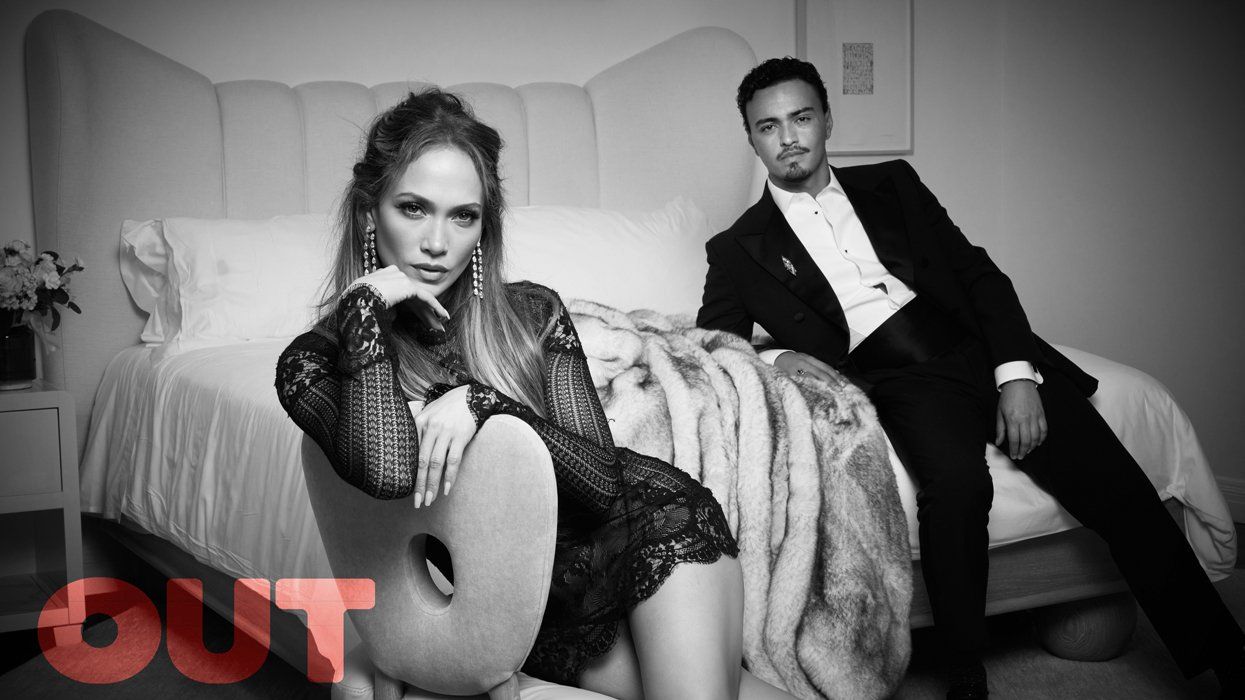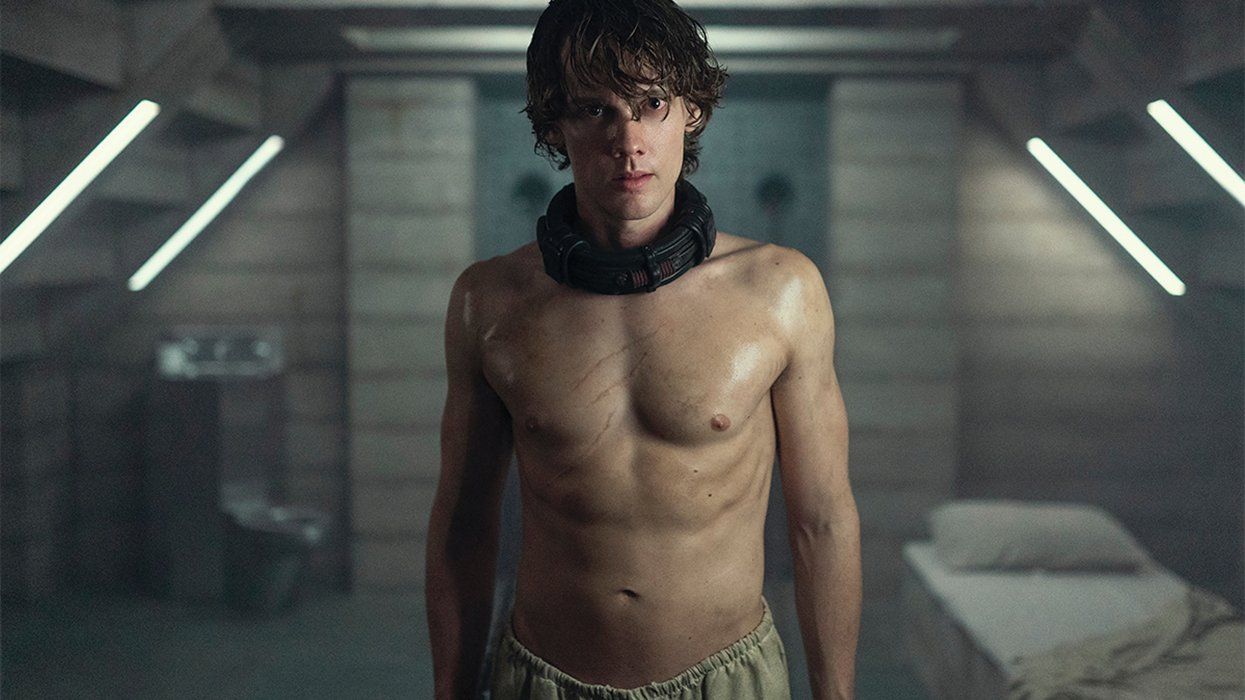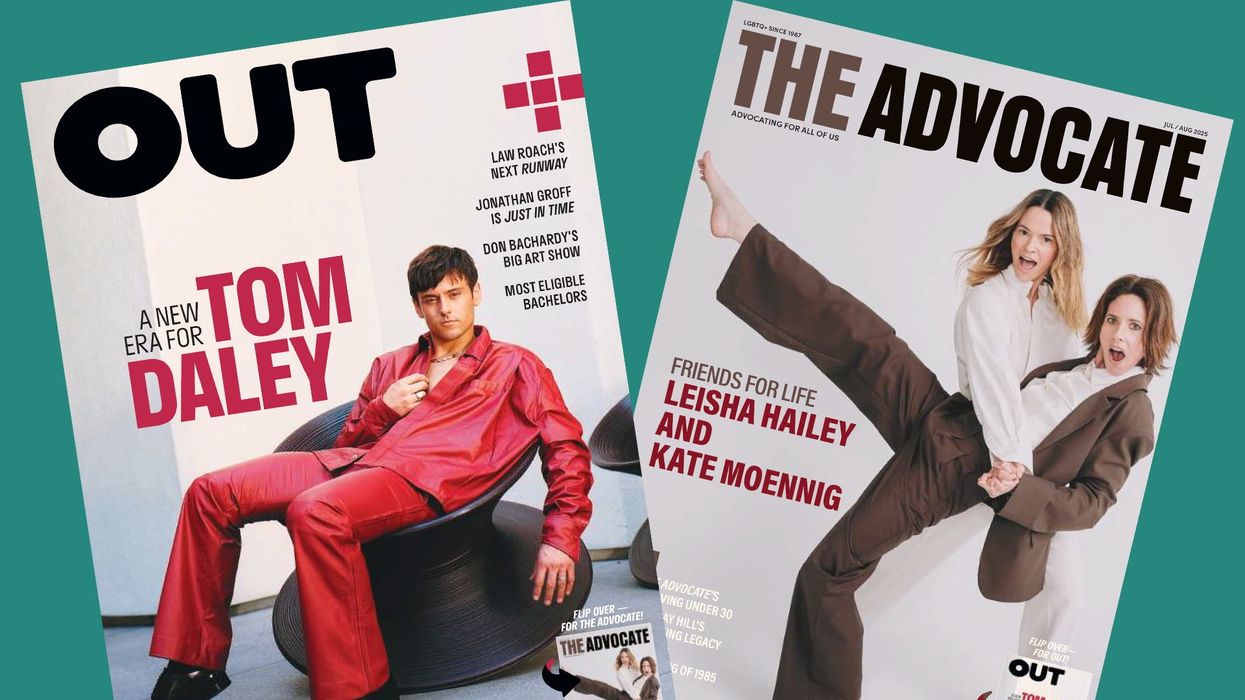Marie Antoinette famously declared, "Let them eat cake," before eventually falling victim to the sharp blade of a guillotine. In a dirty back room of a club in Berlin's Neukolln neighborhood, that familiar quote may be heard echoing off the grimy walls but, for the trash drag queens whose lips it comes from, it's more ketamine-flavored "kake" than cake--and don't expect to see Marie Antoinette stumble in lest her dress be made of toilet paper and trash bags.
This is the land of the Real Housewives of Neukolln, a trash drag community of artists who've bent society's standards of gender and performance until they broke, then used the shards as accessories. Nestled into the hypermasculine bubble of Berlin, the Real Housewives have come from the gutters and become queer superstars. They've performed in clubs next to dirt lots and the world-renowned Hamburger Banhof Museum. They've thrown monthly parties so wild that it's impossible to attend and not find someone slumped over in a k-hole or a stray stiletto broken in a corner.
But, beneath all the glamor, makeup, and sweat, who are they? The simple answer is that the Housewives are a collection of queens: Fabio M Silva's Collapsella; Jake Indiana's Cheryl Nobyl; Eliot Gardepe's Marquis de Shade; James Doyle's Fanny; Jana's Ida Entity aka Ode Milk; Alex Lee's Viagra Falls; Dan Saniski's The Babadouche; and Henry Boles' Ash Traylia. But to start and stop there would do a disservice to the wild, weird world they've created seemingly overnight. Their real story is what documentary filmmakers Reda Ait and Josephine Page sought to uncover as the two became entranced in the Housewives' world upon.
"I first met Collapsella in an after party in Neukolln," Reda explained. "After a conversation about drag and performance she invited me to their show at The Club. The week before I went to my first Housewives show, I met Josephine Page and asked her if she wanted to make a documentary with me, and she said yes. The next Friday, we were there with our cameras, Collapsella introduced us to the other girls and everything started really naturally." Well, as natural as one can expect from a world so far removed from the realities of the brutalist city.
What it became, as their cameras rolled from September 2016 to April 2017, was an incubator for Reda's already gestating project, THEM, a DIY video production company he'd begun in 2015 during his first year at Luc Besson's school in Paris. It was an apt name for the group he'd captured, as so much of the Real Housewives platform exists in a space that was impossible to define in binary terms. For Rena, it was a perfect fit for the philosophy that guided his films. "I like to sum up my work as an 'intimate exploration of the possibilities of the body,'" Reda said of his work. "It's about giving a voice to artists that don't necessarily have the platform to express themselves and, above all, it's about teaching people about a reality they need to accept."
Or, as Reda explained: "Documenting is a necessity; I film what I need to film." And that's what he did. As the Housewives gallivanted around Berlin, he was there with his camera filming their every move as Collapsella, Cheryl, Fanny, Marquis de Shade, Viagra Falls, The Babadouche, Ida Entity, and Ash Traylia kicked down the outdated ideas of what drag should be. Far removed from the perfectionist, glam queens we've come to know on RuPaul's Drag Race, this bunch were busy tearing down Berlin's oppressive wall of masculinity brick by brick.
It was against this seemingly impenetrable force that many of the Housewives found the inspiration to step into their now-iconic drag personas. For Fabio, whose Collapsella persona often seems as unhinged as it is genius, he responded to the stifling heteromasculinity with the realization that to overcome it, he had to antagonize it. "I started creating a space and community around me where society's gender binary rules do not apply." It was in this space that the Real Housewives formed and, soon after, Jake Indiana, a New York transplant whose move to Berlin inspired a transformation in both drag and her own gender identity, found a home. "A big part of the Housewives ethos is celebrating femininity in all its forms," Jake explained. "Encountering so much of it when we go out has really galvanized my passion for combating it. Now, I make a point of presenting ultra-feminine looks and performances in these hyper masculine spaces at all times."
It isn't all fun, games, and dick-shaped pinatas, though. At one point during the filming process, Reda recounted a night where Collapsella had performed a new song and "came back the next day with her rib almost broken because a stupid drunk guy had pushed her violently on the floor while she was on stage." Despite that attack, she performed the very next night without fear. "I would definitely have stayed in my room for some days," Reda admitted. "She didn't. They gave me self-confidence on both artistic and personal level and each of them for different reasons."
He added, "They were not scared to forget their lyrics or fail because their show wasn't about perfection--their show was about creating a platform where everyone could come and express themselves. There is no fourth wall anymore because the relationship with their audience is fundamental." It only takes one trip to their monthly parties to know that Reda is absolutely correct. Standing front row for the one-year anniversary of the Housewives' spectacularly queer Frrruity party in October, I bore witness to enough sights, sounds, and ingested chemicals to know that there was no other drag family that compares. It's as transformative for the audience as it has been for the Housewives themselves.
When Fabio began to perform in drag, it offered him "the freedom to try a lot of different things." That meant dabbling in everything from singing French chanson and cheesy pop music to remaking Yoko Ono's "Cut Piece" track and weaving operatic death songs into her set. Through good performances and complete failures, he came to realize that "all of this experimentation has allowed me to solidify my own identity (or identities) and feel more and more comfortable with who I am as a human being and an artist." For Boles, whose Ash Traylia personality was admittedly inspired by his reputation in Berlin's queer techno scene as "that Australian guy," his foray into drag has changed his world. "Living life in her shoes has radically altered how I perceive and profess my own gender identity," he explains. "My identity is now more fluid than ever."
That's the truth hidden beneath the glitz, glamour, and pounds of kake that occupy the orbit of The Real Housewives of Neukolln. As ridiculous as they might come off as they serenade packed crowds with covers of "Fergalicious," the Housewives are a revolution in the hypermasculine Berlin club scene. They embody a sort of "queer reality," as Reda explains it: "A mixed and genderless microcosm where everyone respects each other and is allow to speak their mind, but also has to fight to create the opportunity where it can happen. The work of the Housewives challenges queer and trans identities because they embody on stage a bigger reality than their own."
With the documentary filmed and finished, Reda may have closed his own chapter with the Housewives in one sense, but by sharing their world, he's allowed for a window into a new sense of reality--the importance of which isn't lost on Fabio. "I hope that, with this documentary, people feel like they too can try out new things, experiment with their own doubts regarding gender and personal expression," he said before adding, with a flair: "Not only it's ok to be a queerdo, it's fucking amazing to be a queerdo!"








